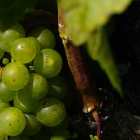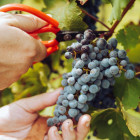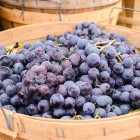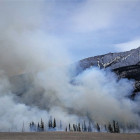Parts of Europe have seen record temperatures so far this summer, and forecasts suggest the heat won’t be letting up any time soon.
Traditionally, warm summer weather is welcomed by winemakers, and indeed, as head of the Bordeaux Wine Council Philippe Bardet told AFP in June, “two or three days” of heatwave is “magic” for winemaking in the region.
But there’s a marked difference between warm conditions and unprecedented, blistering temperatures – and the recent heatwave has certainly lasted longer than a few days. So what does the hot weather mean for Europe’s vineyards? And what impact will it have on their wines?
Burnt grapes
Like humans, grapes can also suffer from sunburn, and burnt grapes can affect the fruity characteristics of a wine, so they’re generally discarded – this inevitably means lower yields.
Higher alcohol levels
Grapes need sunshine and warmth to ripen, and as they ripen, sugar levels within the grape increase. If the sugars are too high come harvest time, the wine will have higher alcohol levels, which can result in unbalanced flavours and require more work during the winemaking process to rectify.
Loss of acidity
A grape’s malic acid is very sensitive to high temperatures, and will drop significantly once temperatures rise above 30°C. This acid is largely responsible for a wine’s freshness – without it wines will be heavy, flat and ‘flabby’ tasting – so grapes must be carefully monitored and picked before this happens.
Photosynthesis shutdown
The climatic optimum for grapevines is between 25°C and 35°C. Once grapes are exposed to temperatures higher than this, photosynthesis – and therefore ripening – can come to a complete stop. This means grapes are smaller, yields are lower and winemakers will have to take action to compensate for bitter flavours.
Tough working conditions
Undertaking manual vineyard work in high temperatures under the blazing sun comes with significant health risks, so during heatwaves estates may have to change shift patterns, limit labour hours and even pick grapes at night.
Higher prices
These difficult growing conditions inevitably mean less wine is produced – indeed, a number of European countries have already predicted lower-than-average yields for this year. The simple laws of supply and demand mean that wine prices could very well increase for the 2019 vintage, assuming of course that the wine is deemed acceptable for sale in the first place.
Mitigating the damage
Generally speaking, a heatwave such as the one we are currently experiencing is not good news for winemakers, but there are a number of steps that can be taken to limit the damage – many of which are becoming increasingly popular due to the risks of climate change.
Measures winemakers can take to beat the heat include:
- Installing physical shade over vines
- Crop thinning, thus allowing the vine to divert greater resources to fewer grapes
- Using organic and biodynamic principles, which many believe fortify vines against excessive heat
- Applying a sunblock spray to the fruit
- Harvesting as quickly as possible and at night
- Beginning the harvest earlier in the year
- Adding tartaric acid to the wine during the winemaking process, although this is usually only done as a last resort.






